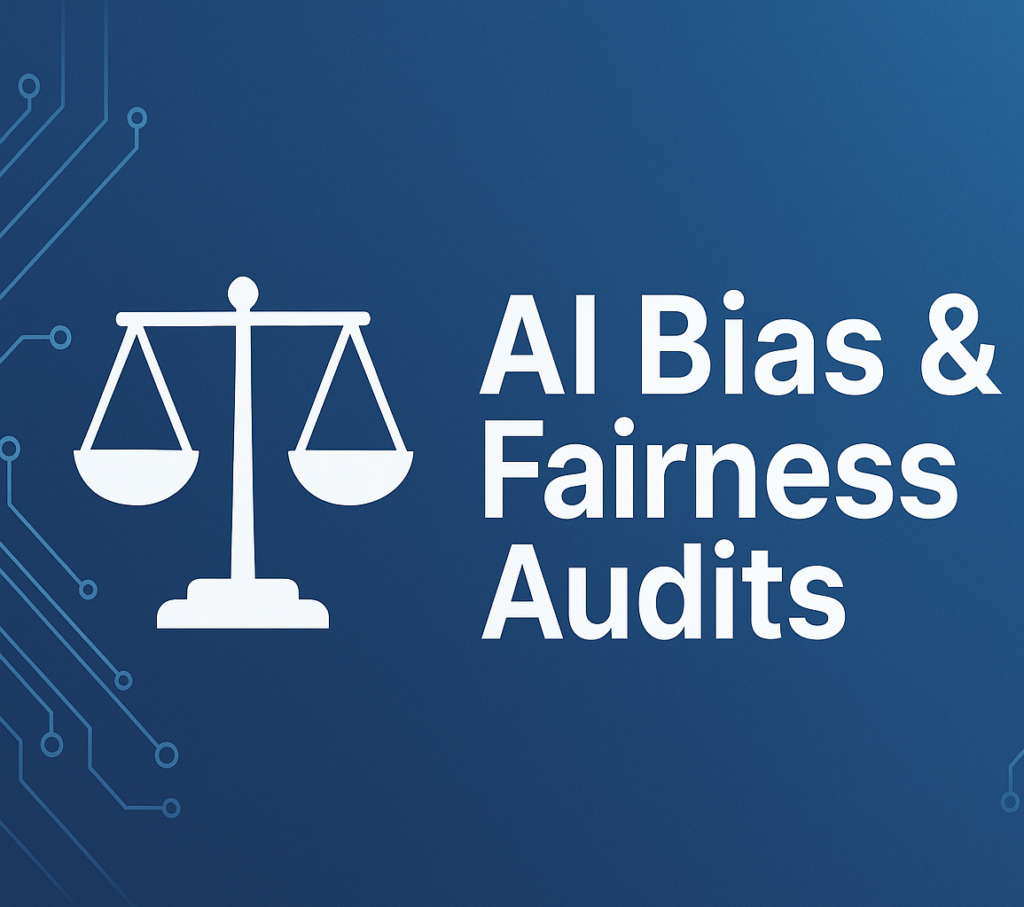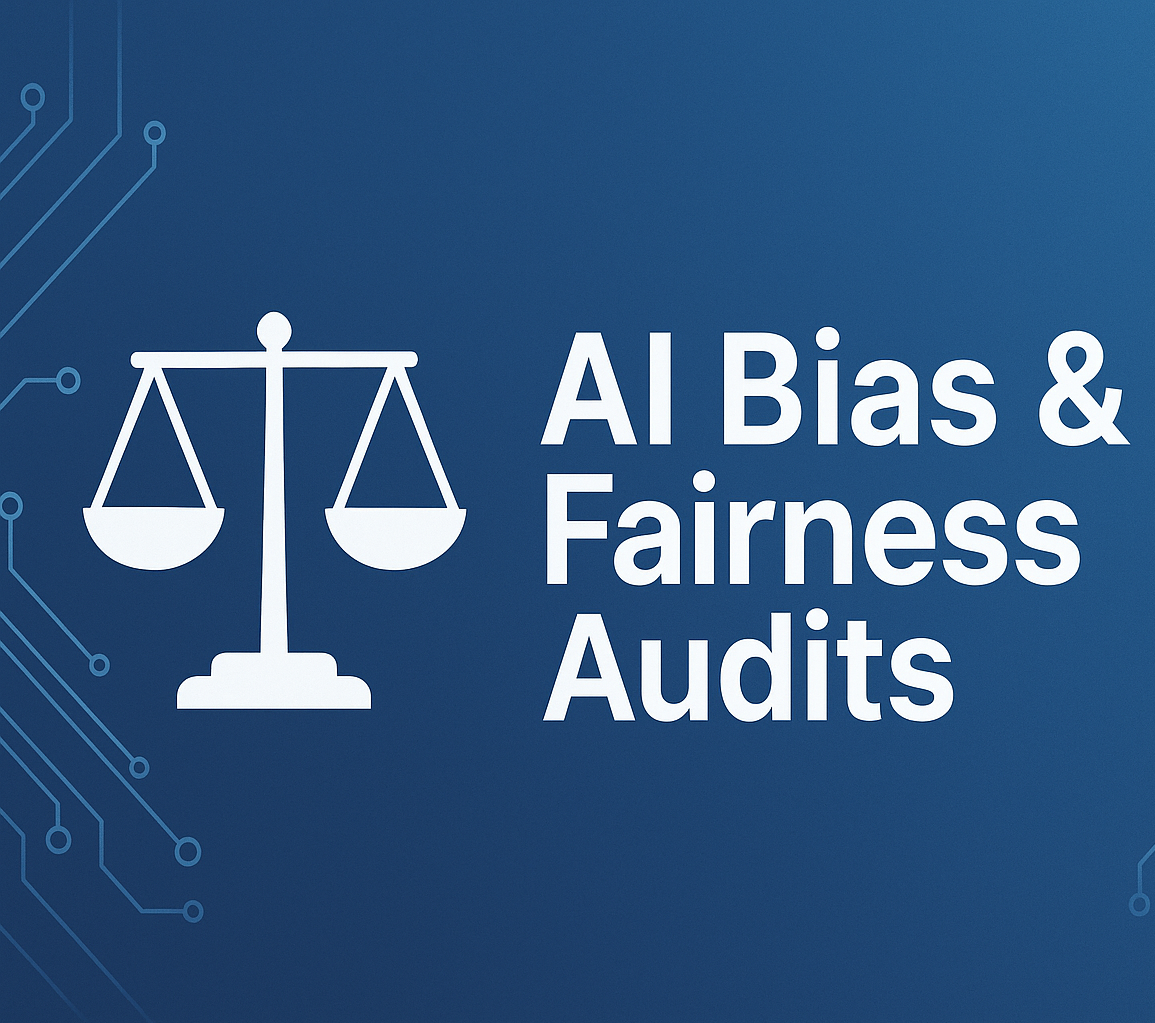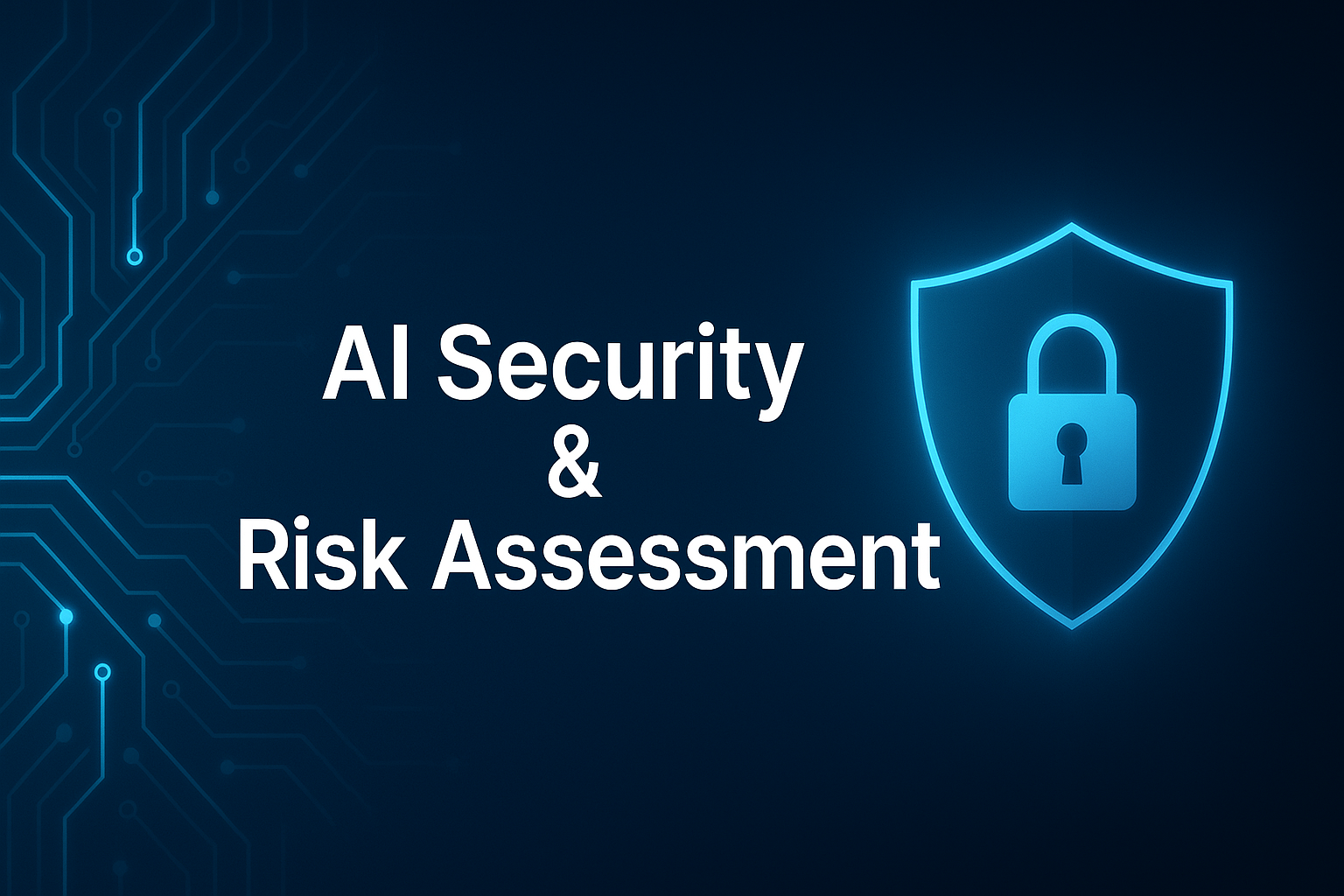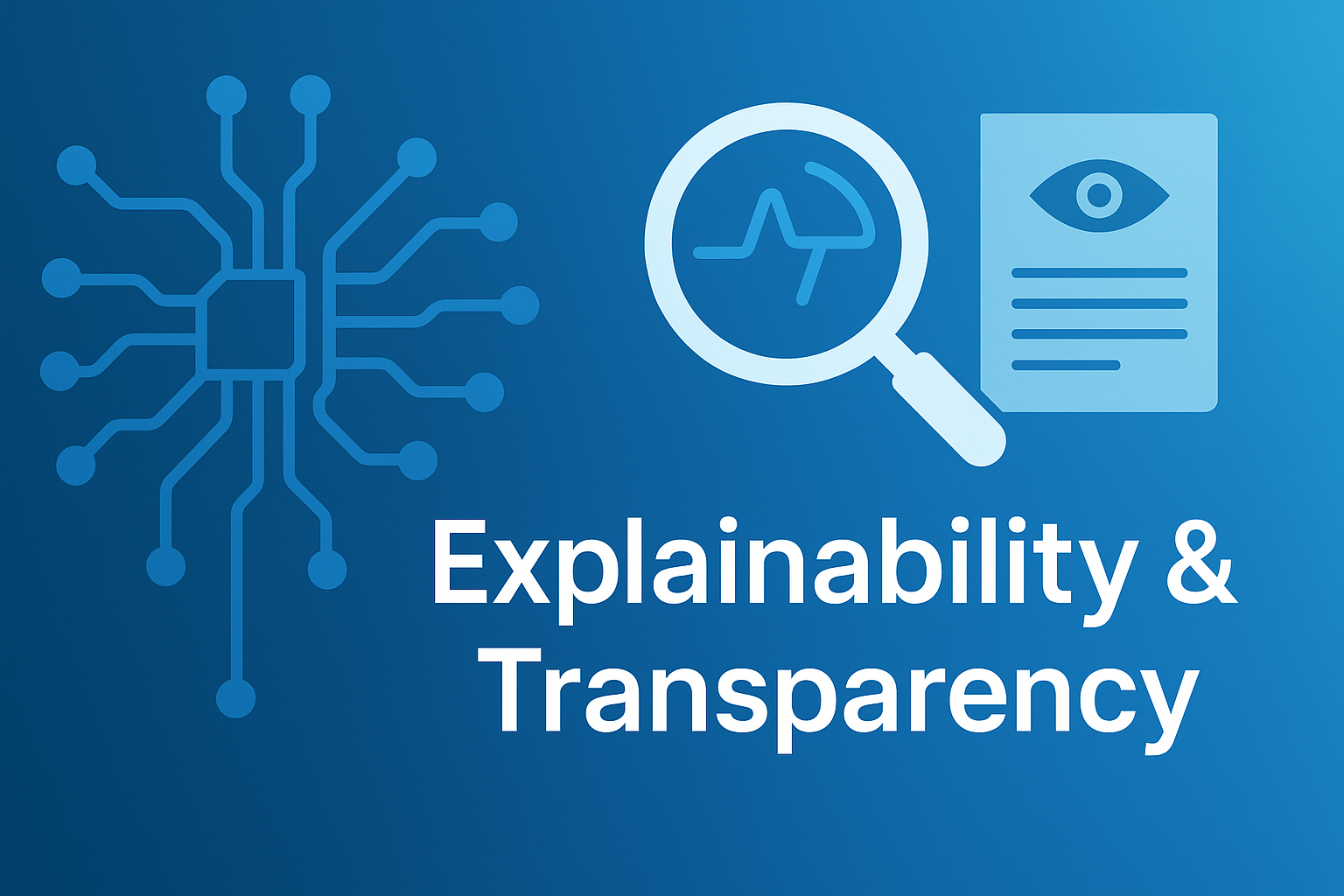AI Bias and Fairness Audits: Ensuring Ethical and Transparent Artificial Intelligence
Introduction to AI Bias and Fairness
Why Fairness Matters in Artificial Intelligence
In 2025, Artificial Intelligence (AI) systems become deeply integrated into our decision-making processes across industries, ensuring fairness is more important than ever. Unchecked bias can lead to discriminatory outcomes, eroding trust and causing significant societal harm. Fairness in AI is not just a technical challenge but a moral imperative that demands transparency, accountability, and ethical responsibility.
Understanding Bias in Machine Learning Models
Bias in machine learning models often raises from historical data, incorrect assumptions, or imbalanced datasets. These biases can appear in various ways, such as gender discrimination in hiring algorithms or racial bias in predictive policing tools. Recognizing and addressing these biases is essential to develop AI systems that serve all users fairly.
What Are AI Bias and Fairness Audits?
Definition
AI Bias and Fairness Audits are systematic evaluations designed to identify, measure, and mitigate biases within AI systems. Their primary purpose is to ensure that algorithms operate transparently and do not assume or increase existing societal inequalities. These audits provide organizations with insights into potential ethical risks and guide them in implementing corrective measures.
Key Components of a Fairness Audit
A comprehensive fairness audit typically includes data analysis, algorithmic assessment, stakeholder impact evaluation, and documentation of findings. It involves both quantitative metrics—such as disparate impact analysis—and qualitative reviews to capture nuanced ethical concerns. The goal is to create AI systems that are not only efficient but also be inclusive.
Common Sources of Bias in AI Systems
Data Collection and Labeling Bias
One of the most important sources of AI bias originates from data collection and labeling practices. If the training data reflects historical prejudices or lacks diversity, the resulting AI model will likely reproduce those biases. Inaccurate or subjective labeling further increase this issue, leading to skewed outcomes.
Algorithmic Bias and Model Training
Algorithmic bias can occur during model development when certain features are weighted in ways that unintentionally favor one group over another. Additionally, optimization goals focused solely on accuracy may overlook fairness considerations, embedding discriminatory patterns within the AI system.
Human Bias in AI Development
Developers and data scientists bring their own unintentional biases into the AI creation process. Decisions regarding feature selection, data preprocessing, and evaluation criteria can all introduce subtle forms of bias. Promoting diversity within AI development teams and fostering awareness of ethical implications are crucial steps toward minimizing human-induced bias.
The Ethical Importance of Fairness Audits
Building Trustworthy AI Systems
Fairness audits play a pivotal role in fostering trust between AI developers, organizations, and end-users. When AI systems are transparently evaluated for bias, it reassures stakeholders that ethical considerations are prioritized. Trustworthy AI not only enhances user confidence but also strengthens brand reputation and long-term sustainability.
Compliance with Legal and Regulatory Standards
With the rise of AI regulations worldwide, conducting fairness audits is becoming a legal necessity. Laws such as the EU AI Act and guidelines from organizations like OECD and ISO emphasize the importance of ethical AI practices. Regular audits help organizations stay compliant, avoid legal penalties, and demonstrate their commitment to responsible AI development and deployment.
Methodologies for Conducting AI Fairness Audits
Quantitative vs. Qualitative Auditing Techniques
AI fairness audits typically involve a mix of quantitative and qualitative methods. Quantitative techniques involve statistical measures like demographic parity, equal opportunity, and disparate impact ratios. Qualitative approaches focus on stakeholder interviews, ethical risk assessments, and contextual evaluations to understand the broader implications of AI decisions.
Popular Tools and Frameworks (e.g., IBM AI Fairness 360)
Several open-source tools and frameworks assist organizations in performing fairness audits. IBM’s AI Fairness 360 provides a comprehensive set of metrics and bias mitigation algorithms. Google’s What-If Tool offers interactive visualizations to explore model behavior across different demographic groups. These tools empower teams to detect and address biases effectively during AI development and deployment.
Case Studies Highlighting AI Bias
Bias in Recruitment Algorithms
One popular case involved a major tech company whose AI recruitment tool was found to favor male candidates over female applicants due to biased historical hiring data. The incident highlighted the dangers of relying solely on past data without proper auditing, leading to the discontinuation of the tool and a re-evaluation of AI practices within the organization.
Discrimination in Facial Recognition Systems
Facial recognition technologies have faced widespread criticism for exhibiting racial and gender biases. Studies revealed significantly higher error rates for people of colour and women compared to white males. These findings prompted regulatory scrutiny and led several companies to stop or limit the use of facial recognition systems until fairness and accuracy could be ensured.
Industry Best Practices for Reducing AI Bias
Implementing Diverse Data Sets
To minimize bias, organizations must prioritize the use of diverse and representative datasets. This involves sourcing data from various demographics, geographies, and contexts to ensure that AI models generalize well across different population groups. Regularly updating datasets to reflect current realities also helps in reducing outdated or historical biases.
Continuous Monitoring and Model Updates
AI systems should not be viewed as “set and forget” solutions. Continuous monitoring is essential to detect emerging biases as models interact with new data over time. Implementing feedback loops, periodic audits, and automated alert systems ensures that fairness remains a dynamic and ongoing focus throughout the AI lifecycle.
Role of Explainable AI (XAI) in Fairness Audits
Enhancing Transparency and Accountability
Explainable AI (XAI) plays a critical role in fairness audits by making AI decision-making processes more transparent. By providing clear, interpretable insights into how algorithms arrive at specific outcomes, XAI helps stakeholders identify potential biases and justify decisions. This transparency promote accountability, enabling organizations to address unfair practices proactively.
Regulatory Landscape for AI Fairness
Global Standards and Guidelines
International bodies and governments are increasingly establishing standards to govern AI fairness. Frameworks like the OECD AI Principles and UNESCO’s Recommendation on the Ethics of AI set benchmarks for transparency, accountability, and inclusiveness. Adhering to these global guidelines ensures that AI systems align with universally accepted ethical norms.
Upcoming Legislation Impacting AI Audits
Several jurisdictions are drafting or enacting legislation aimed at enforcing AI fairness. The European Union’s AI Act, for instance, categorizes AI applications by risk levels and mandates strict auditing for high-risk systems. Similar initiatives in the United States, Canada, and other regions signal a growing regulatory emphasis on bias detection and mitigation in AI technologies.
Challenges in Performing AI Bias Audits
Technical Limitations
Conducting comprehensive AI bias audits can be hindered by technical challenges such as limited access to proprietary algorithms, insufficient data transparency, and the complexity of machine learning models. These obstacles make it difficult to fully understand and assess how biases originate within AI systems.
Ethical Dilemmas and Subjectivity
Fairness is often context-dependent and subjective, leading to ethical dilemmas during audits. Different stakeholders may have varying definitions of what constitutes “fair” outcomes. Balancing competing interests while striving for impartiality remains a significant challenge for auditors and AI developers alike.
The Future of AI Bias and Fairness Auditing
Advances in Automated Auditing Tools
The future of AI auditing lies in automation and AI-assisted tools that can continuously scan for bias in real-time. Emerging technologies are enabling more efficient, scalable, and proactive auditing processes, reducing the reliance on manual reviews.
The Growing Role of AI Ethics Committees
Organizations are increasingly establishing AI ethics committees to oversee fairness practices. These multidisciplinary teams ensure that ethical considerations are embedded throughout AI development and deployment, promoting a culture of responsibility and transparency.
How Organizations Can Prepare for AI Audits
Building Ethical AI Governance Frameworks
To prepare for AI audits, organizations should implement robust governance frameworks that define ethical standards, accountability structures, and auditing protocols. Clear policies help streamline the auditing process and demonstrate a commitment to fairness.
Training Teams on Bias Awareness
Educating AI developers, data scientists, and stakeholders about bias and its implications is crucial. Regular training sessions, workshops, and awareness programs equip teams with the knowledge to identify, prevent, and mitigate bias throughout the AI lifecycle.
Conclusion: Moving Towards Responsible AI
The Continuous Journey of Fairness in AI
AI bias and fairness audits are not one-time tasks but ongoing commitments to ethical innovation. As AI technologies evolve, so too must our approaches to ensuring they serve all communities equitably. By embedding fairness into every stage of AI development and fostering a culture of transparency and accountability, organizations can pave the way for responsible, trustworthy AI systems that benefit society.
FAQs on AI Bias and Fairness Audits
What is the difference between bias detection and fairness auditing?
Bias detection focuses on identifying specific instances of bias within datasets or algorithms, while fairness auditing is a broader, systematic evaluation of AI systems to ensure they operate ethically and without discrimination across various contexts.
How often should AI systems be audited for fairness?
AI systems should be audited regularly, especially when models are updated, retrained, or deployed in new environments. Continuous monitoring is recommended to catch new biases over time.
Can AI ever be completely free of bias?
While it is challenging to eliminate all bias due to the subjective nature of fairness and limitations in data, organizations can significantly reduce harmful biases through diligent auditing, diverse data practices, and ethical AI design.
What industries are most affected by AI bias?
Industries such as healthcare, finance, recruitment, law enforcement, and education are particularly vulnerable to AI bias due to the high-stakes decisions AI systems make in these fields.
What are the best tools for conducting AI fairness audits?
Popular tools include IBM AI Fairness 360, Google What-If Tool, Fairlearn, and Aequitas. These frameworks offer metrics, visualization, and mitigation techniques to support comprehensive fairness audits.

Mastering the EU AI Act and Global AI Regulations
Mastering the EU AI Act and Global AI Regulations
Mastering the EU AI Act and Global AI Regulations



